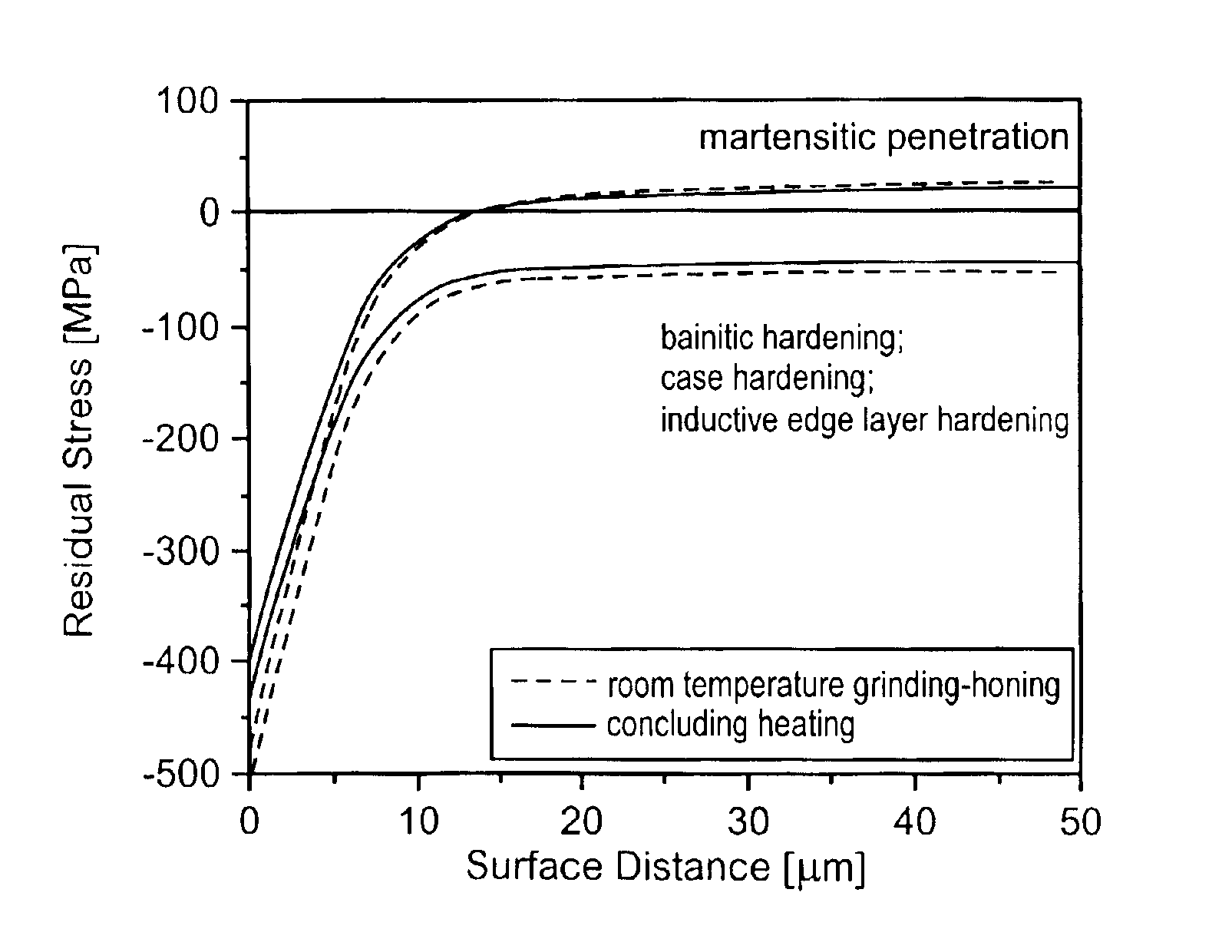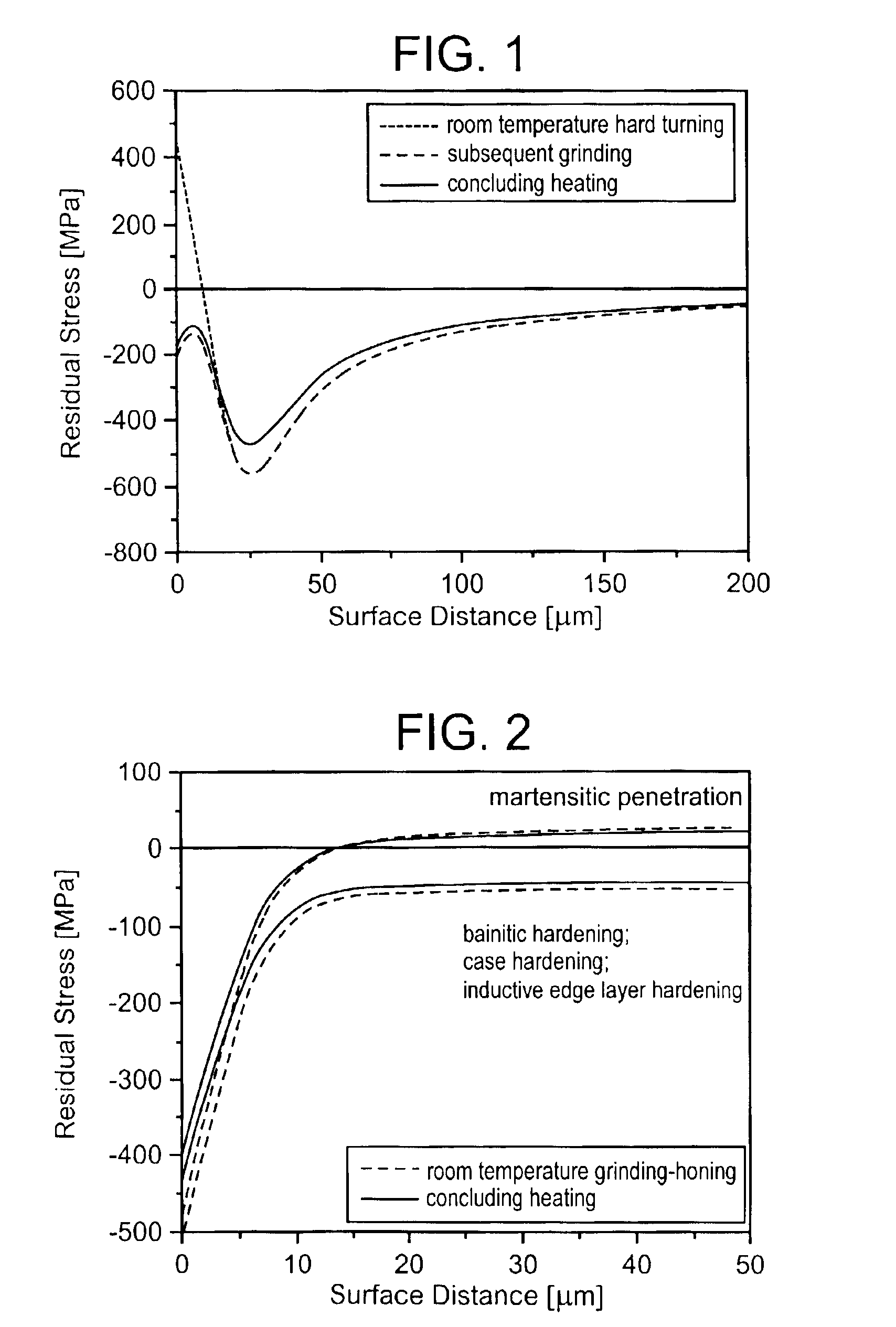Process for producing a component from metal
- Summary
- Abstract
- Description
- Claims
- Application Information
AI Technical Summary
Benefits of technology
Problems solved by technology
Method used
Image
Examples
Embodiment Construction
[0026]The foregoing and additional features and characteristics of the present invention will become more apparent from the following detailed description considered with reference to the accompanying drawing figures in which like reference numerals designate like elements.
[0027]The drawings show embodiments of the invention. FIGS. 1 and 2 show diagrams, the residual stress of a metallic component being plotted on the y-axis and the surface distance being plotted on the x-axis.
[0028]The invention can be used to produce a metallic component with a long service life. Further, a high dislocation density is produced by surface machining, such as hard turning, milling, grinding, honing and grinding, at room temperature in the plasticizing material area with a varied extent depending on the process. With suitable process control (for example, up-cut milling, hard turning with a suitable cutting edge geometry), in addition residual compressive stresses, which inhibit cracks, are formed in ...
PUM
| Property | Measurement | Unit |
|---|---|---|
| Temperature | aaaaa | aaaaa |
| Temperature | aaaaa | aaaaa |
| Area | aaaaa | aaaaa |
Abstract
Description
Claims
Application Information
 Login to View More
Login to View More - R&D
- Intellectual Property
- Life Sciences
- Materials
- Tech Scout
- Unparalleled Data Quality
- Higher Quality Content
- 60% Fewer Hallucinations
Browse by: Latest US Patents, China's latest patents, Technical Efficacy Thesaurus, Application Domain, Technology Topic, Popular Technical Reports.
© 2025 PatSnap. All rights reserved.Legal|Privacy policy|Modern Slavery Act Transparency Statement|Sitemap|About US| Contact US: help@patsnap.com


